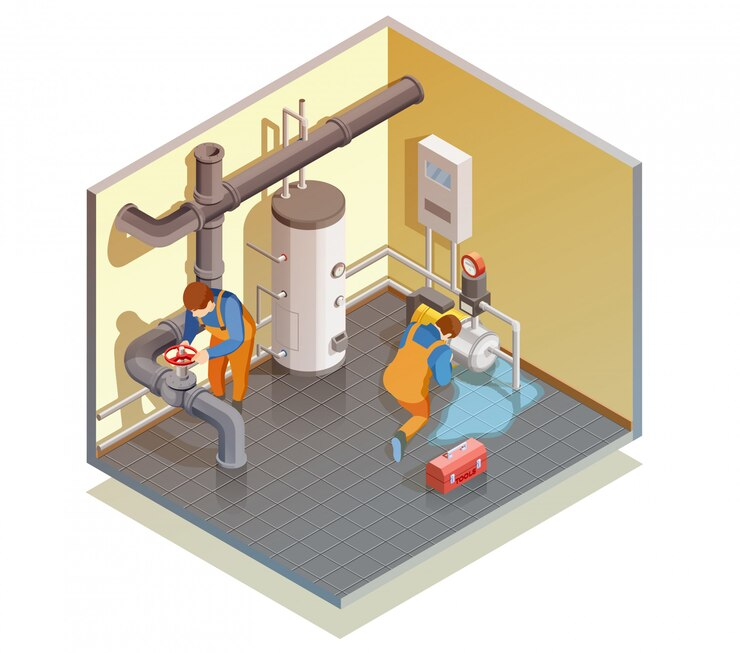As winter approaches, maximizing the efficiency of your heating oil system becomes a top priority. Whether you’re trying to reduce energy costs or just want to ensure a comfortable home, a few simple adjustments can make a big difference. From adjusting thermostat settings to ensuring your home’s insulation is up to par, there are a variety of strategies to keep your home cozy without breaking the bank. Plus, with the convenience of having heating oil delivered to your home, maintaining a well-functioning system is easier than ever.
In this article, we’ll dive into some practical ways to improve the efficiency of your heating oil system, helping you stay warm and reduce energy waste.
1. Fine-Tune Your Thermostat for Optimal Settings

The thermostat is at the heart of your heating system, and setting it correctly can lead to significant savings. Heating costs can fluctuate considerably based on how you manage your thermostat, so let’s explore a few essential tips for optimal settings.
Use Programmable Thermostats
Programmable thermostats allow you to set different temperatures for different times of day, which is especially helpful if your family has a regular schedule. You can keep the temperature lower while everyone is asleep or away and have it warm up just before anyone returns. This simple change reduces unnecessary heating while ensuring your home remains comfortable when needed.
Ideal Temperature Ranges
The Department of Energy suggests keeping your thermostat at 68°F during waking hours in the winter. When you’re asleep or away, lowering the temperature to 60–62°F can help save even more. Every degree you lower the thermostat for eight hours can save up to 1% on your heating bill, making this a highly effective habit over time.
2. Maintain Proper Insulation and Seal Drafts

A well-insulated home is crucial for maintaining heat and preventing your heating system from overworking. Without proper insulation, much of your home’s warmth can slip through walls, ceilings, floors, and windows.
Check Insulation Levels
If your home feels drafty or you notice rooms that are colder than others, it might be time to assess your insulation. Basements, attics, and crawl spaces are common places where heat can escape, so make sure these areas are adequately insulated. Investing in high-quality insulation materials can lead to substantial savings on heating costs.
Seal Windows and Doors
Windows and doors are often the biggest culprits for heat loss. Adding weatherstripping to doors and caulking around windows can help block cold air from entering your home. For an extra layer of insulation, consider adding thermal curtains, which keep warmth inside and block drafts from windows.
3. Schedule Regular Heating System Tune-Ups
Just like any other system, your heating oil setup will function best with regular maintenance. Keeping your system clean and in good working condition ensures that it runs efficiently and lasts longer.
Annual Professional Inspections
Scheduling an annual inspection with a qualified technician is one of the best steps you can take to maintain efficiency. A professional will check for issues like clogged filters, leaks, and wear on essential parts, all of which can hinder performance. During the inspection, they’ll also clean components that tend to accumulate dust and debris, which can reduce airflow and efficiency.
DIY Maintenance Tips
While professional tune-ups are invaluable, there are also small maintenance tasks you can do yourself. For example, replace or clean your system’s air filters every few months. Clogged filters can restrict airflow, making your system work harder to circulate warm air. Also, ensure that the area around your furnace is clear of any items that could obstruct airflow.
4. Improve Airflow Throughout Your Home

Good airflow is essential for even heating, which prevents your heating oil system from having to work overtime to maintain consistent temperatures.
Use Ceiling Fans to Distribute Heat
Many people think of ceiling fans as a cooling device, but they can also help distribute warm air in the winter. Set your ceiling fan to rotate clockwise at a low speed. This direction pulls cool air up, pushing warm air down into the room and ensuring better heat distribution without straining your heating system.
Unblock Vents and Registers
Make sure that furniture, drapes, and other objects aren’t obstructing vents and registers. Blocked vents can reduce airflow and lead to uneven heating, causing your system to work harder than necessary. Walk through your home to check each vent and keep them clear for optimal performance.
5. Monitor Your Heating Oil Levels and Refuel Strategically
Running out of heating oil unexpectedly can be stressful, especially during peak winter months. Maintaining an efficient system requires that you monitor fuel levels and plan refuels in advance.
Track Usage to Find the Right Refill Frequency
Understanding your average heating oil usage can help you plan when to reorder oil before you run out. Many homeowners find that tracking daily or weekly usage rates helps them optimize refills and avoid last-minute orders, which can sometimes be more costly.
Consider an Automatic Delivery Service
For added convenience and peace of mind, consider using an automatic delivery service for your heating oil. When you have heating oil delivered to your home on a regular schedule, you won’t need to worry about running out, especially during the coldest months. Automatic deliveries can also help you lock in a more consistent price.
6. Upgrade to Energy-Efficient Heating Oil Equipment

If your heating system is over a decade old, you may be missing out on new technology that offers greater efficiency. Upgrading can require an upfront investment, but it could save you significantly in the long run by reducing your heating oil consumption.
Invest in a High-Efficiency Furnace
Modern high-efficiency furnaces are designed to extract more heat from the same amount of fuel, which can reduce your annual energy costs. Look for furnaces with an AFUE (Annual Fuel Utilization Efficiency) rating of 90% or higher. These units are typically more compact and quieter, adding additional benefits beyond energy savings.
Consider a Smart Thermostat
Smart thermostats take programmable thermostats to the next level. They learn your household patterns, automatically adjusting the temperature for maximum efficiency. Some models even have remote access, allowing you to control your home’s temperature from your phone, so you can ensure you’re only using heating oil when it’s truly needed.
7. Implement Simple Heat Conservation Tips

Conserving heat doesn’t require extensive renovations. Here are a few easy actions you can take to boost your home’s energy efficiency without major investments.
Open Curtains During the Day
Let the sun work to your advantage by opening curtains on south-facing windows during the day. Sunlight naturally warms your home, reducing the need for additional heating. Just remember to close the curtains in the evening to trap the day’s warmth inside.
Close Off Unused Rooms
Heating unused rooms wastes energy. Close the doors and vents in rooms you don’t regularly use. This approach directs more warm air to the areas of your home where it’s needed, allowing your heating oil system to operate more efficiently.
8. Consider Alternative Heating Oil Options
Some homeowners have the option of using biofuel blends with their heating oil system, which can increase efficiency and reduce environmental impact.
Explore Bioheat as a Sustainable Option
Bioheat is a blend of traditional heating oil and renewable materials, like soybean oil or animal fats. These biofuels burn cleaner than pure heating oil, reducing carbon emissions and promoting better indoor air quality. Many modern heating oil systems are compatible with Bioheat blends, allowing you to reduce your carbon footprint without making extensive changes.
Final Thoughts: Small Adjustments for Big Savings
Making your heating oil system more efficient doesn’t require a complete overhaul. By implementing even a few of these strategies—like adjusting your thermostat, improving insulation, or performing regular maintenance—you can improve your system’s performance, lower energy bills, and reduce environmental impact. Consistency is key; small changes repeated over time will yield substantial benefits for both your comfort and your wallet.
Remember, the more proactive you are with maintenance, insulation, and smart use of your heating system, the better equipped you’ll be to face the winter months with confidence and comfort.










